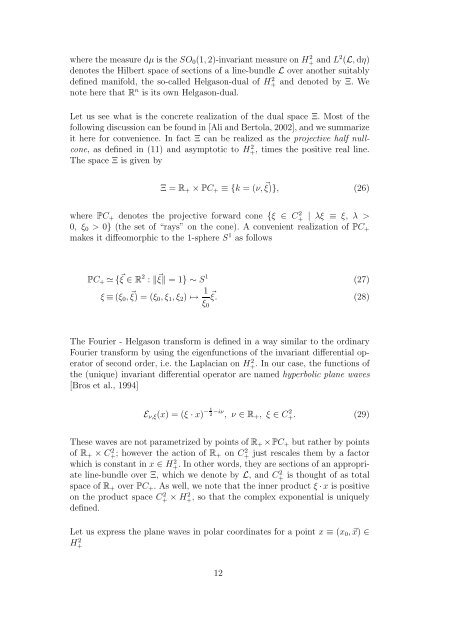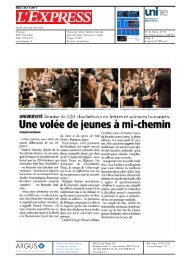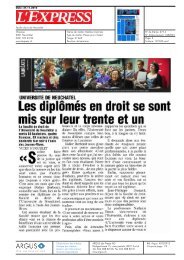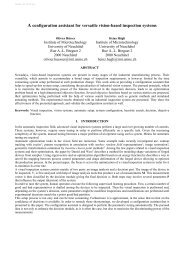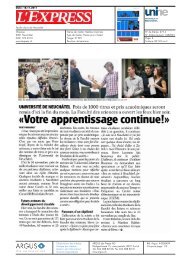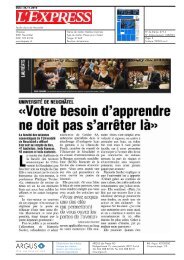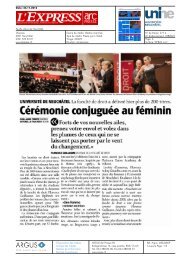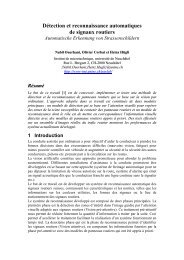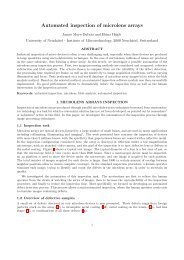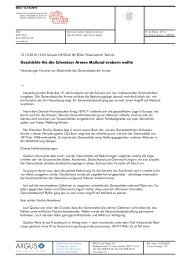Continuous Wavelet Transform on the Hyperboloid - Université de ...
Continuous Wavelet Transform on the Hyperboloid - Université de ...
Continuous Wavelet Transform on the Hyperboloid - Université de ...
Create successful ePaper yourself
Turn your PDF publications into a flip-book with our unique Google optimized e-Paper software.
where <strong>the</strong> measure dµ is <strong>the</strong> SO 0 (1, 2)-invariant measure <strong>on</strong> H 2 + and L2 (L, dη)<br />
<strong>de</strong>notes <strong>the</strong> Hilbert space of secti<strong>on</strong>s of a line-bundle L over ano<strong>the</strong>r suitably<br />
<strong>de</strong>fined manifold, <strong>the</strong> so-called Helgas<strong>on</strong>-dual of H 2 + and <strong>de</strong>noted by Ξ. We<br />
note here that R n is its own Helgas<strong>on</strong>-dual.<br />
Let us see what is <strong>the</strong> c<strong>on</strong>crete realizati<strong>on</strong> of <strong>the</strong> dual space Ξ. Most of <strong>the</strong><br />
following discussi<strong>on</strong> can be found in [Ali and Bertola, 2002], and we summarize<br />
it here for c<strong>on</strong>venience. In fact Ξ can be realized as <strong>the</strong> projective half nullc<strong>on</strong>e,<br />
as <strong>de</strong>fined in (11) and asymptotic to H+ 2 , times <strong>the</strong> positive real line.<br />
The space Ξ is given by<br />
Ξ=R + × PC + ≡{k =(ν, ⃗ ξ)}, (26)<br />
where PC + <strong>de</strong>notes <strong>the</strong> projective forward c<strong>on</strong>e {ξ ∈ C 2 + | λξ ≡ ξ, λ ><br />
0, ξ 0 > 0} (<strong>the</strong> set of “rays” <strong>on</strong> <strong>the</strong> c<strong>on</strong>e). A c<strong>on</strong>venient realizati<strong>on</strong> of PC +<br />
makes it diffeomorphic to <strong>the</strong> 1-sphere S 1 as follows<br />
PC + ≃{ ⃗ ξ ∈ R 2 : ‖ ⃗ ξ‖ =1}∼S 1 (27)<br />
ξ ≡ (ξ 0 , ⃗ ξ)=(ξ 0 ,ξ 1 ,ξ 2 ) ↦→ 1 ξ 0<br />
⃗ ξ. (28)<br />
The Fourier - Helgas<strong>on</strong> transform is <strong>de</strong>fined in a way similar to <strong>the</strong> ordinary<br />
Fourier transform by using <strong>the</strong> eigenfuncti<strong>on</strong>s of <strong>the</strong> invariant differential operator<br />
of sec<strong>on</strong>d or<strong>de</strong>r, i.e. <strong>the</strong> Laplacian <strong>on</strong> H+ 2 . In our case, <strong>the</strong> functi<strong>on</strong>s of<br />
<strong>the</strong> (unique) invariant differential operator are named hyperbolic plane waves<br />
[Bros et al., 1994]<br />
E ν,ξ (x) =(ξ · x) − 1 2 −iν , ν ∈ R + ,ξ∈ C 2 +. (29)<br />
These waves are not parametrized by points of R + ×PC + but ra<strong>the</strong>r by points<br />
of R + × C+; 2 however <strong>the</strong> acti<strong>on</strong> of R + <strong>on</strong> C+ 2 just rescales <strong>the</strong>m by a factor<br />
which is c<strong>on</strong>stant in x ∈ H+ 2 . In o<strong>the</strong>r words, <strong>the</strong>y are secti<strong>on</strong>s of an appropriate<br />
line-bundle over Ξ, which we <strong>de</strong>note by L, andC+ 2 is thought of as total<br />
space of R + over PC + . As well, we note that <strong>the</strong> inner product ξ · x is positive<br />
<strong>on</strong> <strong>the</strong> product space C+ 2 × H2 + , so that <strong>the</strong> complex exp<strong>on</strong>ential is uniquely<br />
<strong>de</strong>fined.<br />
Let us express <strong>the</strong> plane waves in polar coordinates for a point x ≡ (x 0 ,⃗x) ∈<br />
H 2 +<br />
12


